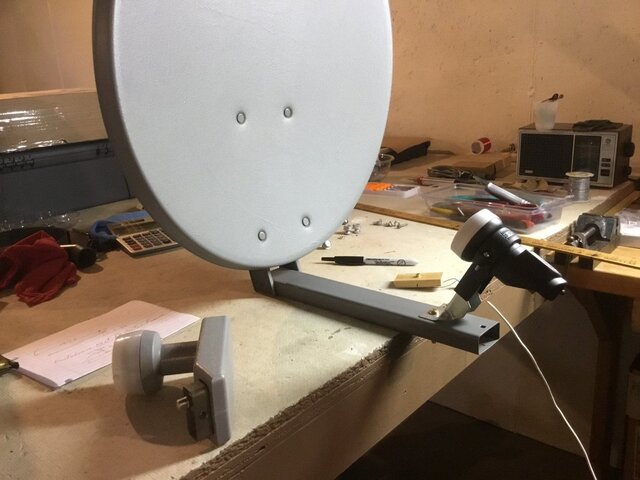pol=polarization, or polarized
as InclinedOrbit explained, it has to do with the geometry of the radiowaves
long story short, sites such as dishpointer will tell you the "skew", it's the angle by which you need to retate the LNBF - or the entire dish (in which case the LNBF can have a skew of 0 degrees) - the result is the same.
a note about "universal" LNBF and LNB. It has nothing to do with how they mount and whether or not they fit a specific dish. It's all about the frequency range that they cover. The KU band for TV services goes from 10700 MHz to 12750 MHz. It is further subdivided in 3 bands (in the context of North America):
10700 MHz to 11700 MHz: used by some international satellites, some of which can be received from parts of the US, but definitely not the most popular band.
11700 MHz to 12200 MHz: that's the main Ku band used for FTA services in the US. That's where the action is. That specific band is often referred to as "standard".
12200 MHz to 12750 MHz is used by pay TV like Dish Network, DirecTv and their Canadian cousins. Those typically use circular polarization and are not directly compatible with regular LNBFs (but you will occasionally scan in a bunch of encrypted channels from those satellites)
so a Universal LNB or LNBF covers those 3 bands
a Standard LNB or LNBF covers only the middle one, 11700 to 12200 MHz. It's more limited but in most cases that's all you need. It will usually allow for faster blind scans (since there's a lot less to scan)
from your location (NJ) there are 2 satellites with services in lower band Ku (10700 to 11700) , one with TV from Guyana, and the other one with a few French TV and radio channels.
That 20" Dish Network dish is definitely small, but should be enough to get a few channels. Just expect to lose reception when there's rain or snow.
the easiest target to start with is Galaxy 3C at 95W, with the CGTN channels. Once you get that, you can fine-tune the LNBF position. Then move the dish slightly toward the west, and you should find 97W.
now, because that dish is small, it will get interference from adjacent satellites. This is a problem with 97W because it's neighbors are a bit more powerful. You might find that some transponders are hard to get, while others are fine. Only a larger dish will solve that. Even the slimline might be too small to avoid such interference.


